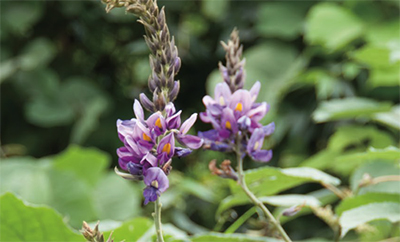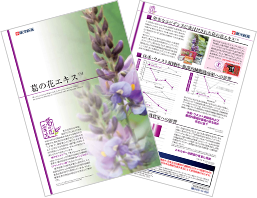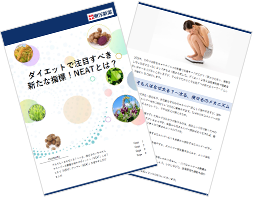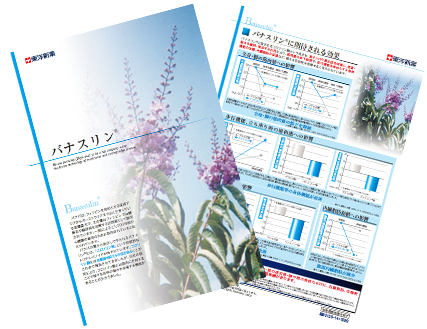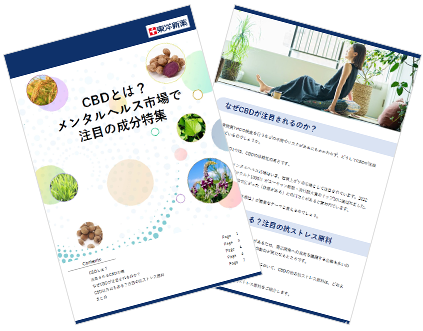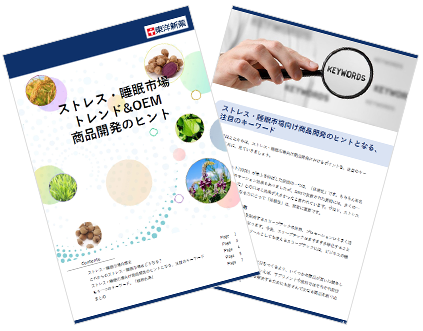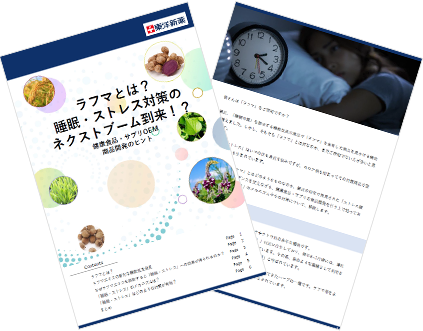The Effect of Food Containing Pueraria Flower Extract on Energy Metabolism
―A Randomized, Double-blind, Placebo-controlled, Parallel-group Study―
Rika Nagamine1), Akira Takano1), Tomoyasu Kamiya1), Kinya Takagaki1), Satoru Suzuki2), Sadao Kurokawa3)
1)TOYO SHINYAKU Co.,Ltd., 2)Shinagawa Season Terrace Health Care Clinic, 3)Center for Liberal Arts,Meiji Gakuin University
薬理と治療 vol.48 no.5, 835-841, 2020
ABSTRACT(概要)
健常成人男性(BMI 20以上25未満)61名を対象に、葛の花由来イソフラボン(テクトリゲニン類として)35mg/日を含む食品又は含まない食品のいずれかを8週間摂取させ、摂取終了後の自転車エルゴメーターによる運動負荷時(3.5メッツ程度)のエネルギー消費量の評価を行った。
その結果、葛の花由来イソフラボン(テクトリゲニン類として)を含む食品の継続的な摂取により、運動負荷時のエネルギー消費量が増加することが示された。
葛の花エキス™関連論文
-

FOOD STYLE 21 vol.22 no.8, 88-91, 2018
葛の花エキスの確かな機能性
-

応用薬理 vol.93 no.1/2, 1-6, 2017
非肥満症者に限定した再統計解析による葛の花エキス含有食品の内臓脂肪に及ぼす影響―プラセボ対照ランダム化二重盲検並行群間比較試験―
-

応用薬理 vol.84 no.3/4, 53-58, 2013
葛花抽出物(葛の花エキス)の遺伝毒性に関する安全性評価
-

薬理と治療 vol.41 no.2, 167-182, 2013
葛の花エキス含有粉末茶飲料の肥満者を含む健常成人に対する過剰量摂取時の安全性に関する検討
-

BIO INDUSTRY vol.30 no.11, 50-55, 2013
「葛の花エキスTM」の抗肥満作用に関する研究
関連学術情報
-

薬理と治療, 2023, 51(5), 703-709
ガルシニアインディカ抽出物含有食品摂取が肝機能に与える影響—プラセボ対照ランダム化二重盲検並行群間比較試験—
インドマンゴスチンエキス末 -

薬理と治療, 2023, 51(4), 521-530
コラーゲンペプチド含有食品が膝および腰の関節機能に与える影響 —ランダム化プラセボ対照二重盲検並行群間比較試験—
コラーゲンペプチド -

薬理と治療, 2021, 49(12), 2127-2133
黒ショウガ抽出物含有食品がQOLに及ぼす影響 ―プラセボ対照ランダム化二重盲検並行群間比較試験―
黒ショウガ -

New Food Industry vol.57 no.11, 17-21, 2015
大麦若葉末の粒度の違いが 整腸、腸管免疫機能および 腸内細菌叢に及ぼす影響について
大麦若葉末 -

薬理と治療, 2024, 52(12), 1465-1472
バナバ葉抽出物含有食品の摂取と運動負荷の併用が筋肉に及ぼす影響 —ランダム化二重盲検プラセボ対照並行群間比較試験—
バナスリン® -
 学術情報の一覧
学術情報の一覧

